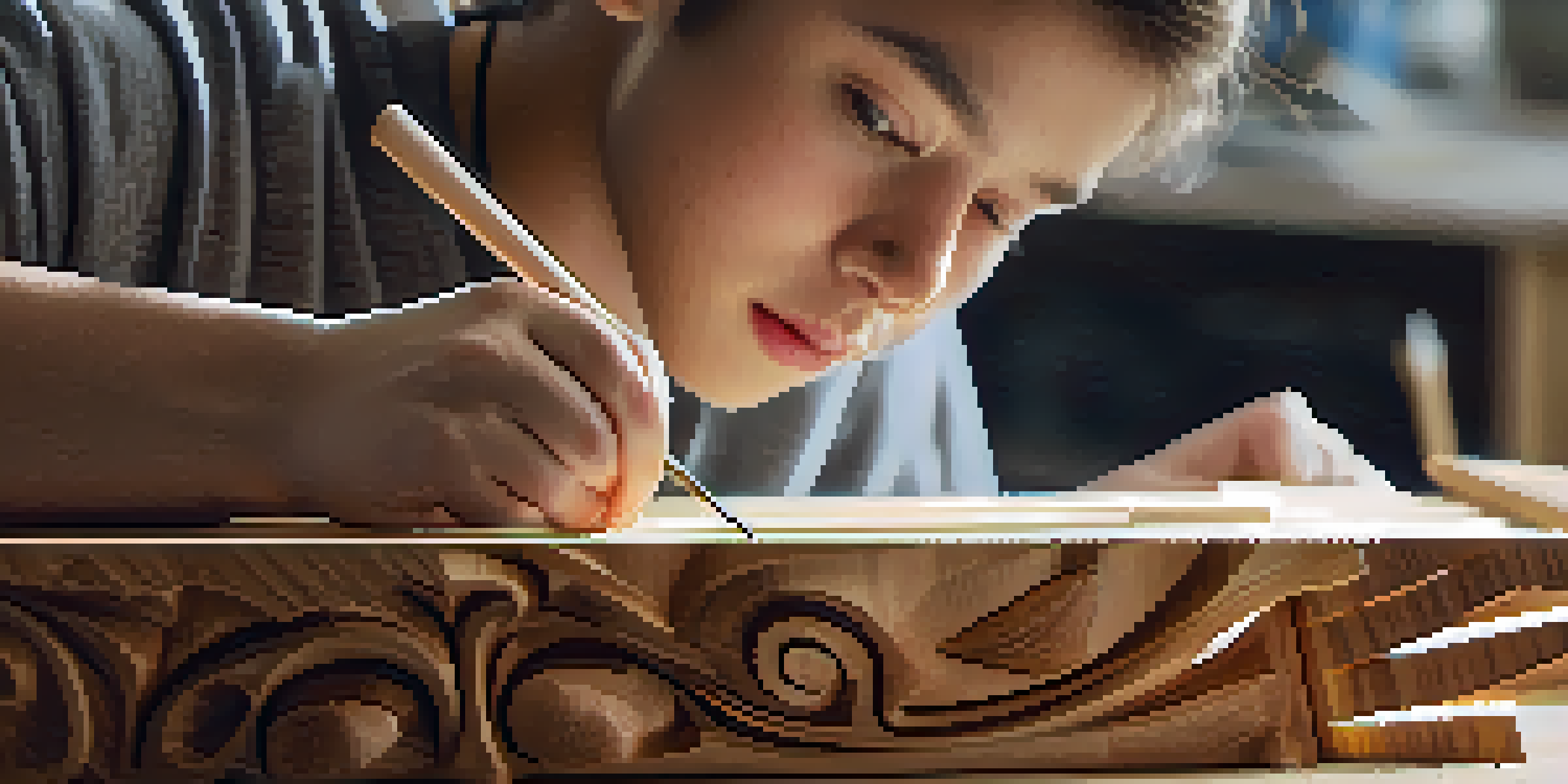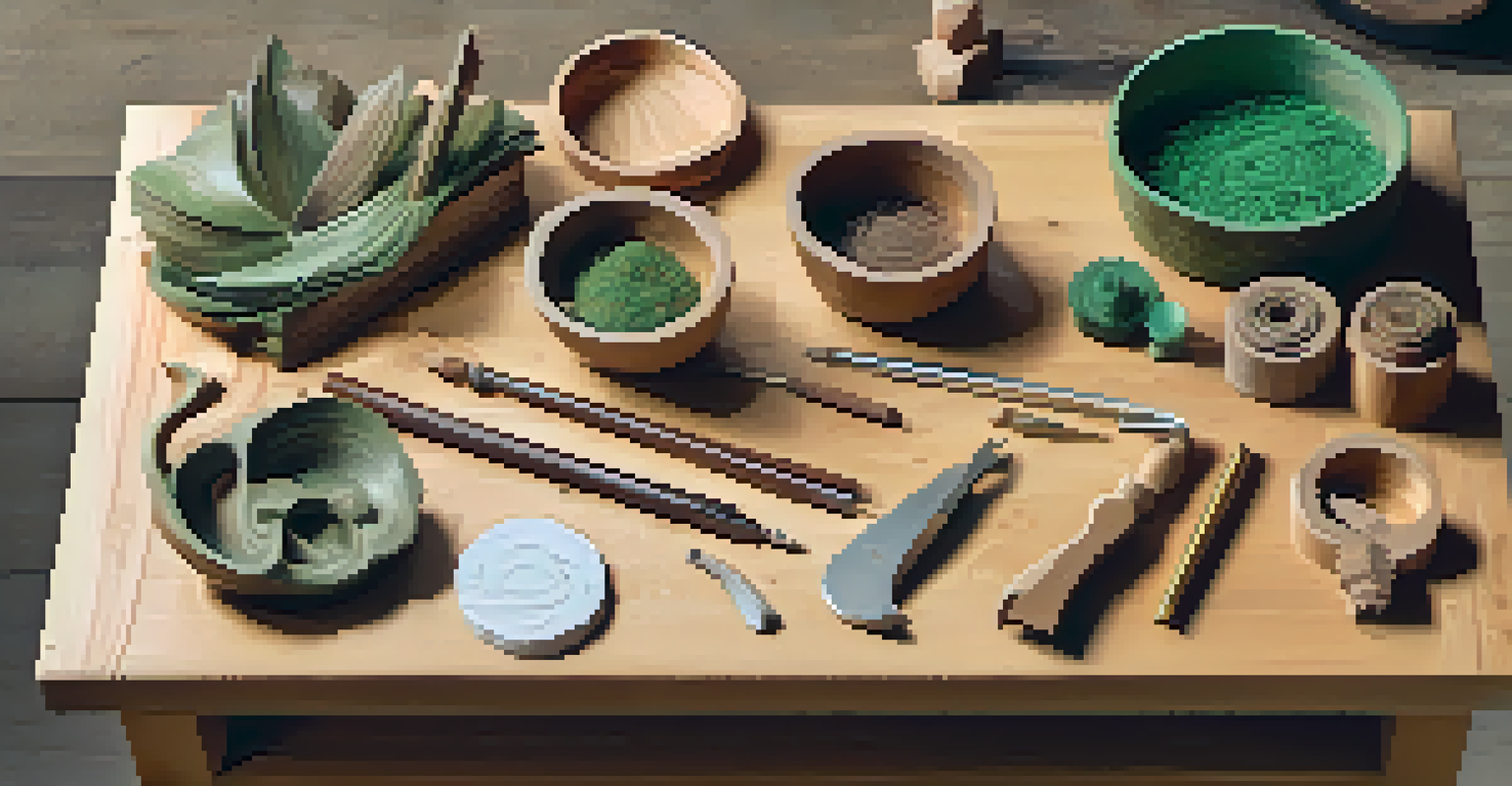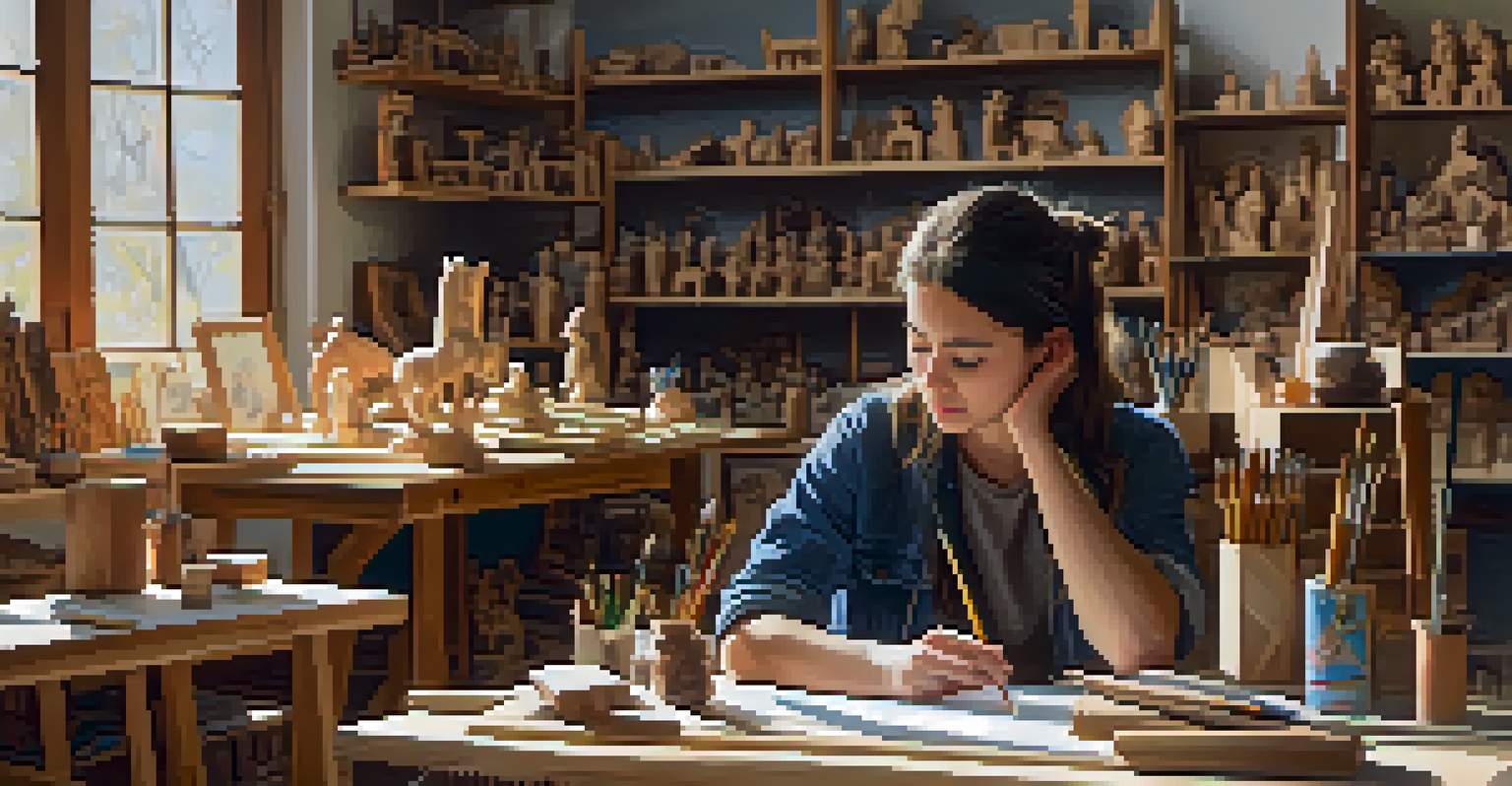How Carving Encourages Problem-Solving in Art Classes

Carving: A Hands-On Approach to Learning Problem-Solving
Carving is more than just creating art; it's a dynamic way to foster problem-solving skills. In art classes, students engage directly with materials, making choices that require critical thinking. This hands-on approach encourages them to experiment, fail, and try again, which is essential for effective problem-solving.
Mistakes are the portals of discovery.
For example, when a student starts with a block of wood, they must envision what they want to create. This initial vision often leads to challenges, such as miscalculating cuts or dealing with unexpected grain patterns. These real-time experiences push students to think on their feet, adapt their plans, and develop resilience.
Moreover, this iterative process mirrors real-world problem-solving scenarios where solutions often require adjustments. As students carve, they learn that each mistake can lead to a new idea, fostering a mindset that embraces challenges rather than shying away from them.
Enhancing Creativity Through Problem-Solving in Carving
Creativity and problem-solving go hand in hand, especially in carving. When students encounter obstacles, they must think creatively to find solutions, sparking innovative ideas. For instance, if a planned design doesn’t take shape as expected, it may lead to a new, unexpected creation that might be even better.

This flexibility encourages students to explore alternative techniques or incorporate different styles. By experimenting with various tools and methods, they not only solve immediate problems but also expand their artistic horizons. Such experiences cultivate a sense of curiosity that is vital for any creative endeavor.
Carving Enhances Problem-Solving Skills
Engaging in carving allows students to develop critical thinking and resilience as they navigate challenges and adapt their plans.
In this way, carving becomes a playground for ideas, where each challenge opens the door to new possibilities. As students learn to navigate these challenges, they also grow more confident in their ability to think outside the box, a skill that benefits them long after art class ends.
The Role of Feedback in Developing Problem-Solving Skills
Feedback plays a crucial role in the problem-solving process during carving exercises. In art classes, students often share their work with peers and instructors, receiving constructive criticism that helps refine their techniques. This dialogue not only improves their carving skills but also encourages critical thinking about their creative choices.
Creativity is intelligence having fun.
When a student hears that a certain approach isn't working, they must assess their options and decide how to proceed. This evaluation process mirrors professional environments where feedback is essential for growth. By learning to accept and integrate feedback, students enhance their ability to solve problems effectively.
Moreover, constructive feedback fosters a collaborative classroom atmosphere, where students can learn from one another’s experiences. This sense of community not only builds confidence but also emphasizes the importance of diverse perspectives in overcoming challenges.
Building Patience and Persistence Through Carving Challenges
Carving is inherently a process that teaches patience and persistence—two vital traits for problem-solving. Unlike quick projects, carving often requires hours or days of meticulous work, during which students encounter setbacks. Learning to navigate these hurdles helps them develop a tenacity that extends beyond art classes.
For example, when a carving doesn’t turn out as envisioned, students must decide whether to start over or find a way to salvage their work. This decision-making process is a crucial part of problem-solving, teaching them the value of perseverance in the face of difficulties. Over time, students learn that persistence often leads to unexpected and rewarding results.
Creativity Fuels Innovative Solutions
The process of encountering obstacles in carving encourages students to think creatively, leading to unexpected and innovative ideas.
In essence, the challenges of carving not only refine their artistic skills but also instill a robust problem-solving mindset. This mindset prepares them for future challenges, whether in their artistic journeys or in everyday life.
Learning to Embrace Mistakes in the Carving Process
One of the most profound lessons students learn through carving is the importance of embracing mistakes. Mistakes are often seen as failures, but in the context of art, they can lead to new discoveries. Each misstep in carving presents an opportunity for students to think critically and creatively about how to move forward.
For instance, a chip in the wood might be transformed into an integral part of the design, pushing students to see their work from a different angle. This shift in perspective is crucial for problem-solving, as it encourages flexibility in thinking and an openness to new ideas. Students begin to understand that mistakes can enhance their artistic expression rather than detract from it.
This acceptance of imperfections fosters a growth mindset, where challenges are viewed as stepping stones rather than obstacles. As students learn to navigate their mistakes, they develop resilience and confidence, key components of effective problem-solving.
The Therapeutic Benefits of Carving and Problem-Solving
Carving also offers therapeutic benefits that enhance problem-solving abilities. The focused nature of carving allows students to engage deeply with their work, often leading to a meditative state. This mindful practice can help clear mental clutter, making way for clearer thinking and better problem-solving.
As students carve, they often find themselves immersed in the rhythm of the process, which can be calming and restorative. This state of flow not only boosts their creativity but also enhances their ability to tackle challenges with a fresh perspective. It’s a reminder that sometimes stepping back and engaging with a task can lead to breakthroughs.
Mistakes Foster Growth and Resilience
Embracing mistakes in carving teaches students that challenges can lead to new discoveries, cultivating a growth mindset essential for problem-solving.
Ultimately, the therapeutic aspects of carving create a safe space for exploration and experimentation. Students learn to approach problems with a sense of calm and clarity, which is invaluable in both art and life.
Translating Carving Skills to Real-World Problem-Solving
The skills developed through carving in art classes extend far beyond the classroom and into the real world. The problem-solving techniques honed during these creative sessions can be applied to various life situations. Whether in a professional setting or personal challenges, the ability to analyze, adapt, and innovate is invaluable.
For instance, someone who has learned to navigate the complexities of carving may find themselves better equipped to handle unexpected challenges in their career. The experience of turning a flawed piece into a masterpiece mirrors many real-life scenarios where flexibility and resourcefulness are key. This adaptability becomes a significant asset in any field.

Ultimately, the problem-solving skills cultivated through carving not only enrich the artistic journey but also prepare students for a future where creative solutions are essential. As they carry these lessons with them, they become more confident and capable individuals, ready to tackle whatever life throws their way.